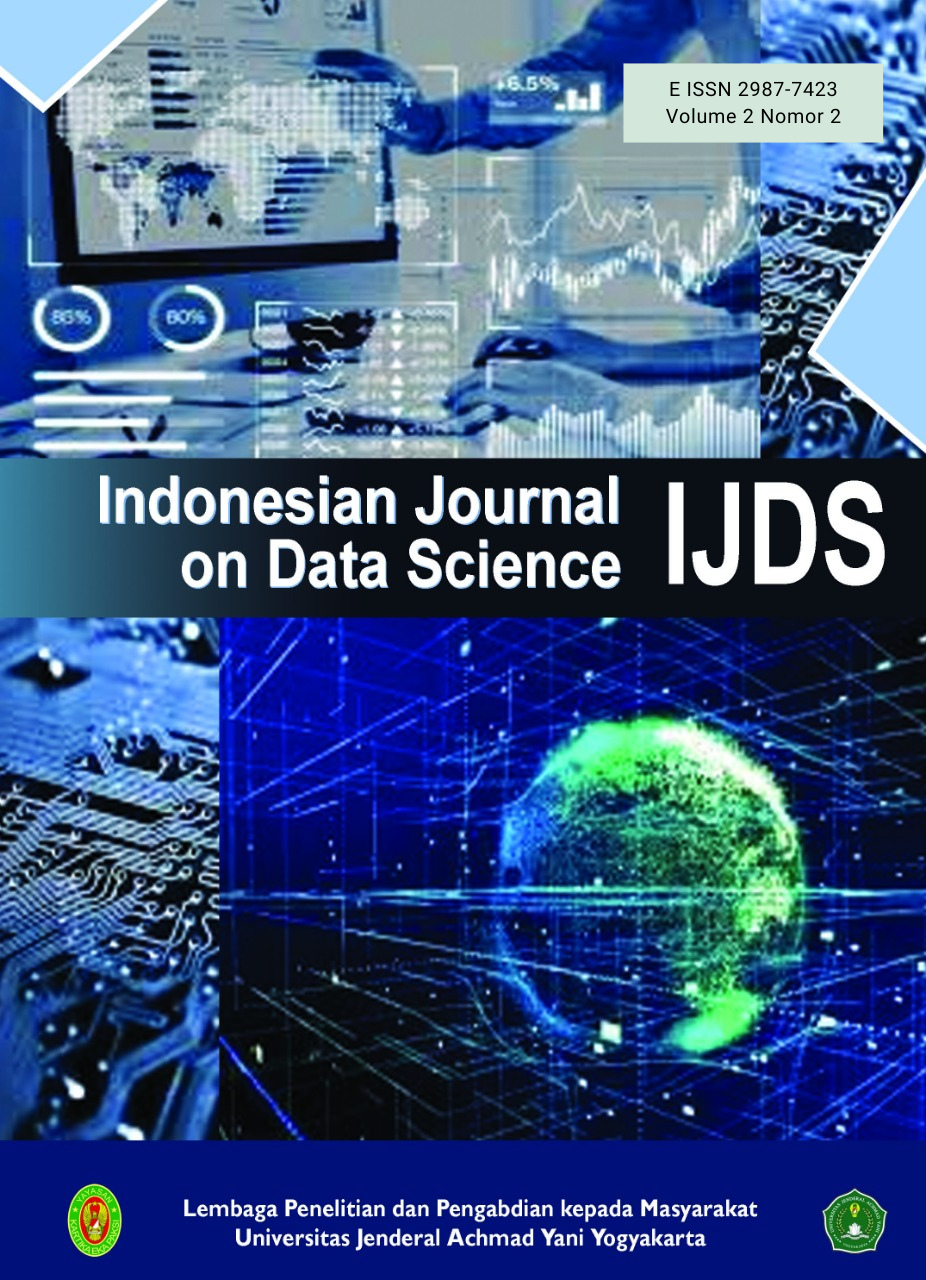ANALISIS PERSEPSI PUBLIK DI MEDIA SOSIAL TERHADAP PRODUK HALAL DI INDONESIA MENGGUNAKAN TEXT MINING
DOI:
https://doi.org/10.30989/ijds.v2i2.1487Keywords:
Halal Product, Social Media, Text Mining, Topic Modeling, Sentiment AnalysisAbstract
The assurance of the halal status of a product is crucial for Muslim consumers, especially in Indonesia, the country with the largest Muslim population in the world. The government, through the Ministry of Religious Affairs, has implemented halal certification to ensure the validity of products. However, the implementation of the halal assurance system remains controversial, with some viewing it as an effort for government profit, particularly by the Ministry of Religious Affairs through the Indonesian Council of Ulama (MUI). Negative sentiments from opposing groups have the potential to escalate and influence other individuals or communities if not properly addressed. One preventive measure is to promote education and awareness of halal products through digital media, especially social media. Given the widespread use of social media, particularly among millennials, it can serve as an effective and cost-efficient platform for education and promotion. Educational efforts via social media require specific strategies to ensure the optimal dissemination of information as intended. Understanding the patterns and characteristics of content as well as the socio-cultural context of social media users is essential. This understanding can be achieved through a comprehensive analysis of the diverse and abundant user-generated content on social media platforms. Therefore, this study proposes a text mining-based method to develop a framework for understanding the characteristics and dynamics of public discourse on halal products on social media.
References
[2] S. Chairunnisyah, "Peran Majelis Ulama Indonesia Dalam Menerbitkan Sertifikat Halal Pada Produk Makanan Dan Kosmetika," EduTech: Jurnal Ilmu Pendidikan dan Ilmu Sosial, vol. 3, no. 2, 2017.
[3] T. N. Ma'rifat and M. Sari, "Penerapan Sistem Jaminan Halal Pada UKM Bidang Olahan Pangan Hewani," Khadimul Ummah, vol. 1, no. 1, 2017.
[4] F. Farhan and B. Sutikno, "The acceptance of halal food products among Non-Muslim consumers in Indonesia," Journal of International Food & Agribusiness Marketing, vol. 36, no. 2, pp. 125–146, 2024.
[5] R. Agusiady, D. Saepudin, and Z. Aripin, "The influence of social media communication on consumer perceptions of brands and purchase intentions in the pandemic and post-pandemic era: an analytical study," Journal of Jabar Economic Society Networking Forum, vol. 1, no. 2, pp. 16–30, 2024.
[6] F. A. Hudaefi and I. Jaswir, "Halal governance in Indonesia: Theory, current practices, and related issues," Journal of Islamic Monetary Economics and Finance, vol. 5, no. 1, pp. 89–116, 2019.
[7] H. Zhu, H. Wu, J. Cao, G. Fu, and H. Li, "Information dissemination model for social media with constant updates," Physica A: Statistical Mechanics and Its Applications, vol. 502, pp. 469–482, 2018.
[8] H. Jung and B. G. Lee, "Research trends in text mining: Semantic network and main path analysis of selected journals," Expert Systems with Applications, vol. 162, 113851, 2020.
[9] A. F. Hidayatullah and M. R. Ma’arif, "Pre-processing tasks in Indonesian Twitter messages," in Journal of Physics: Conference Series, vol. 801, no. 1, p. 012072, 2017.
[10] I. Vayansky and S. A. Kumar, "A review of topic modeling methods," Information Systems, vol. 94, 101582, 2020.
[11] D. M. Blei, A. Y. Ng, and M. I. Jordan, "Latent dirichlet allocation," Journal of Machine Learning Research, vol. 3, pp. 993–1022, Jan. 2003.
[12] U. Chauhan and A. Shah, "Topic modeling using latent Dirichlet allocation: A survey," ACM Computing Surveys (CSUR), vol. 54, no. 7, pp. 1–35, 2021.
[13] M. Wankhade, A. C. S. Rao, and C. Kulkarni, "A survey on sentiment analysis methods, applications, and challenges," Artificial Intelligence Review, vol. 55, no. 7, pp. 5731–5780, 2022.
[14] R. Ferdiana, F. Jatmiko, D. D. Purwanti, A. S. T. Ayu, and W. F. Dicka, "Dataset Indonesia untuk Analisis Sentimen," Jurnal Nasional Teknik Elektro dan Teknologi Informasi (JNTETI), vol. 8, no. 4, pp. 334–339, 2019.
[15] C. Hutto and E. Gilbert, "Vader: A parsimonious rule-based model for sentiment analysis of social media text," in Proceedings of the International AAAI Conference on Web and Social Media, vol. 8, no. 1, pp. 216–225, 2014.
Downloads
Published
Issue
Section
Citation Check
License
Copyright (c) 2025 Muhammad Rifqi Maarif

This work is licensed under a Creative Commons Attribution-ShareAlike 4.0 International License.
Indonesian Journal On Data Science allows readers to read, download, copy, distribute, print, search, or link to its articles' full texts and allows readers to use them for any other lawful purpose. The journal allows the author(s) to hold the copyright without restrictions. Finally, the journal allows the author(s) to retain publishing rights without restrictions
- Authors are allowed to archive their submitted articles in an open access repository
- Authors are allowed to archive the final published article in an open access repository with an acknowledgment of its initial publication in this journal

This work is licensed under a Creative Commons Attribution-ShareAlike 4.0 Generic License.



